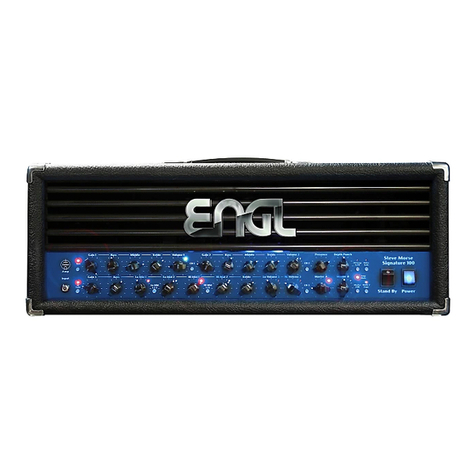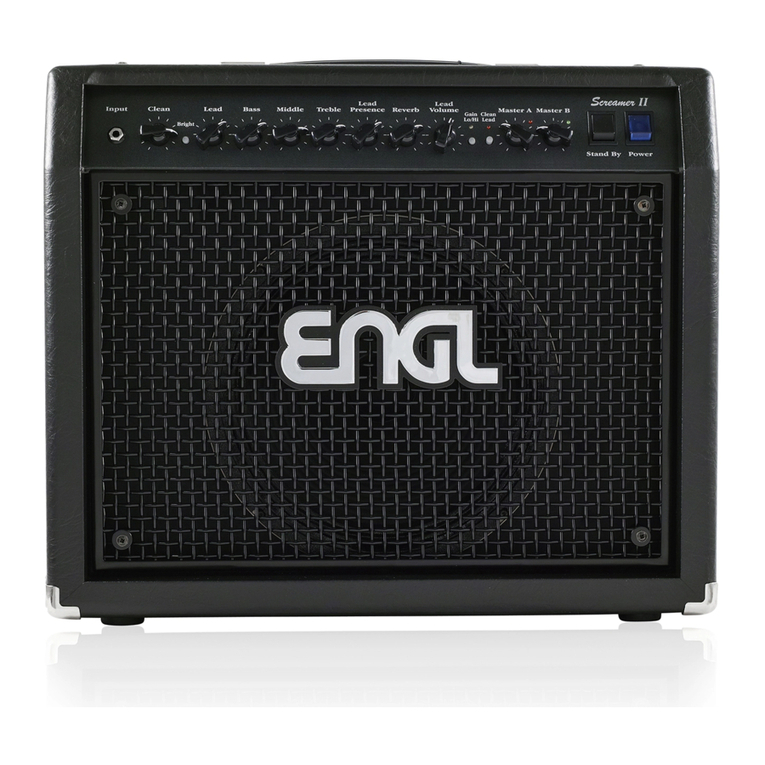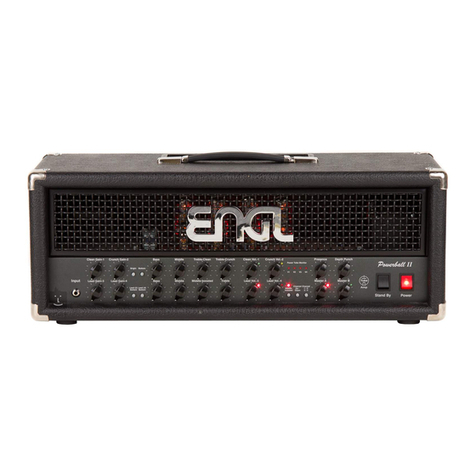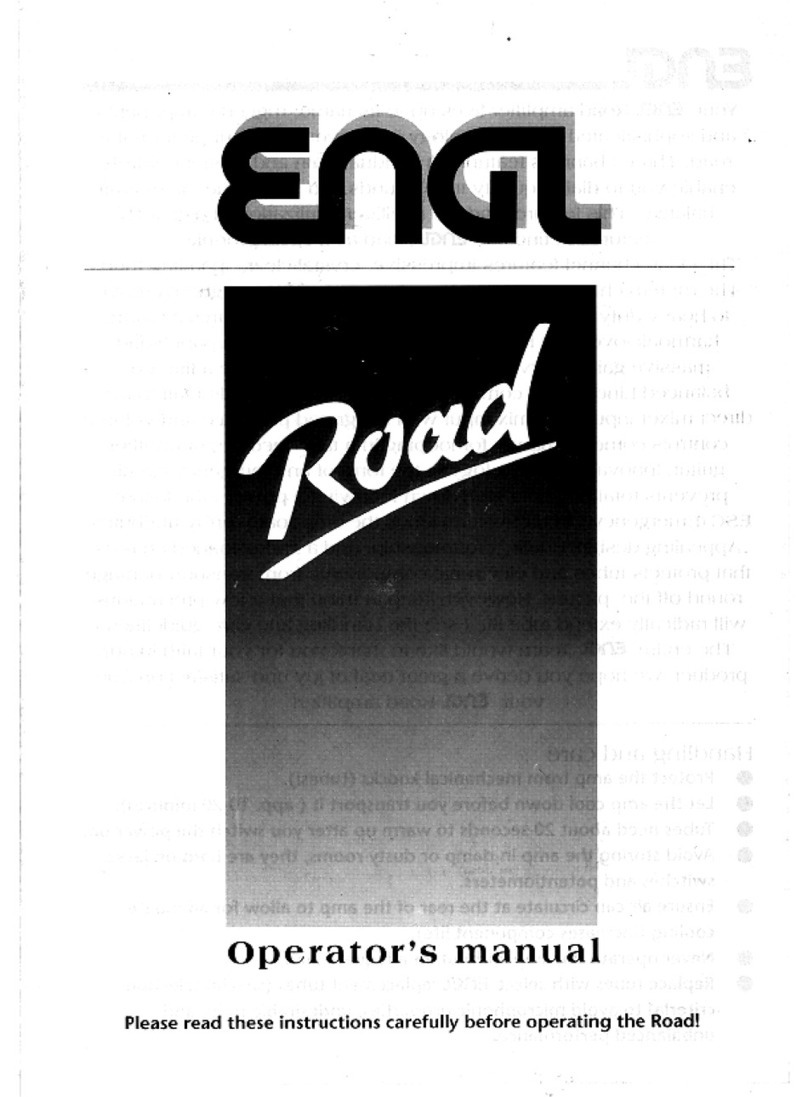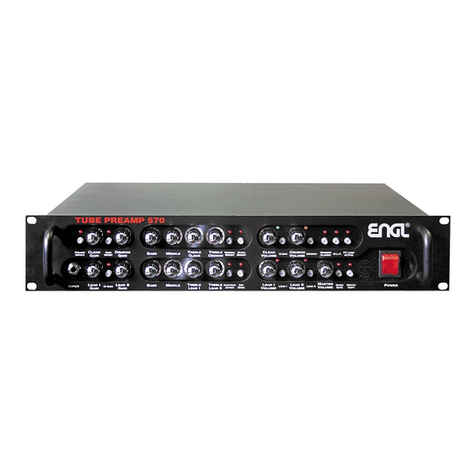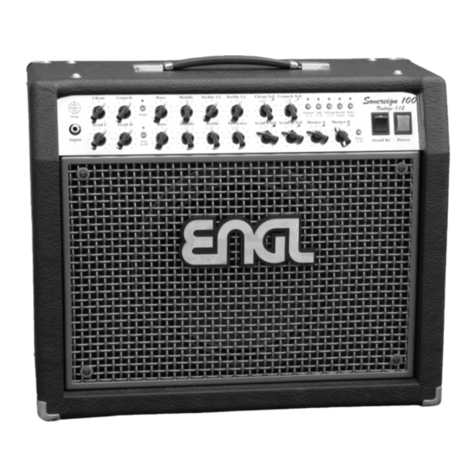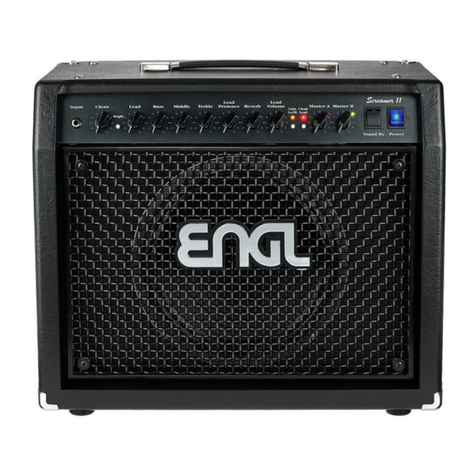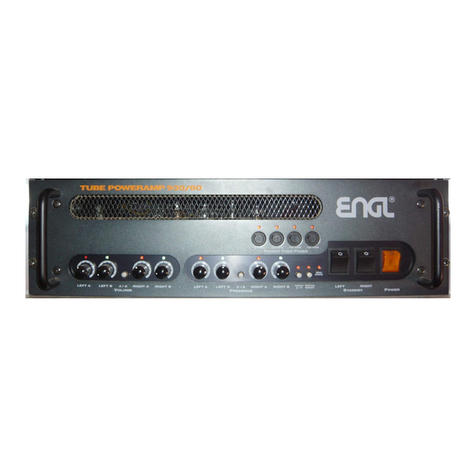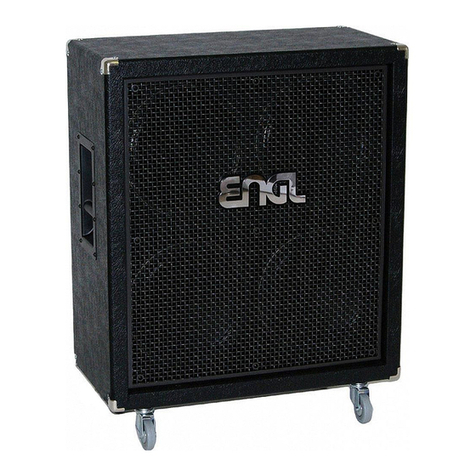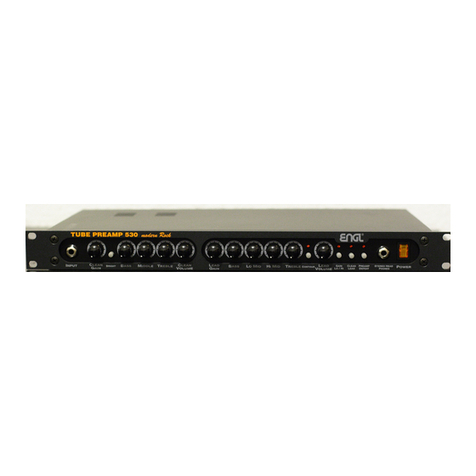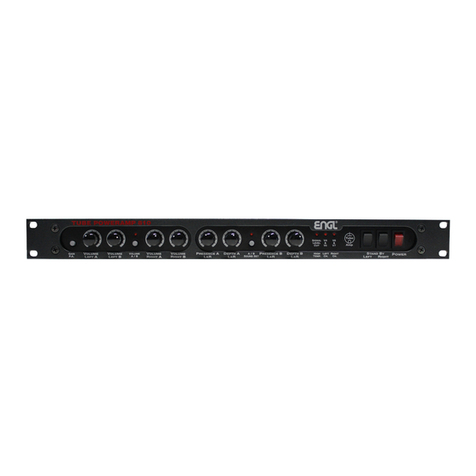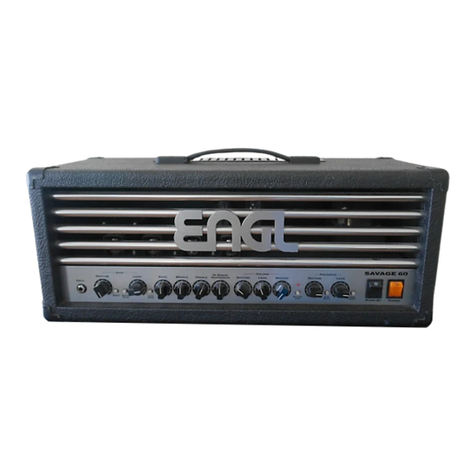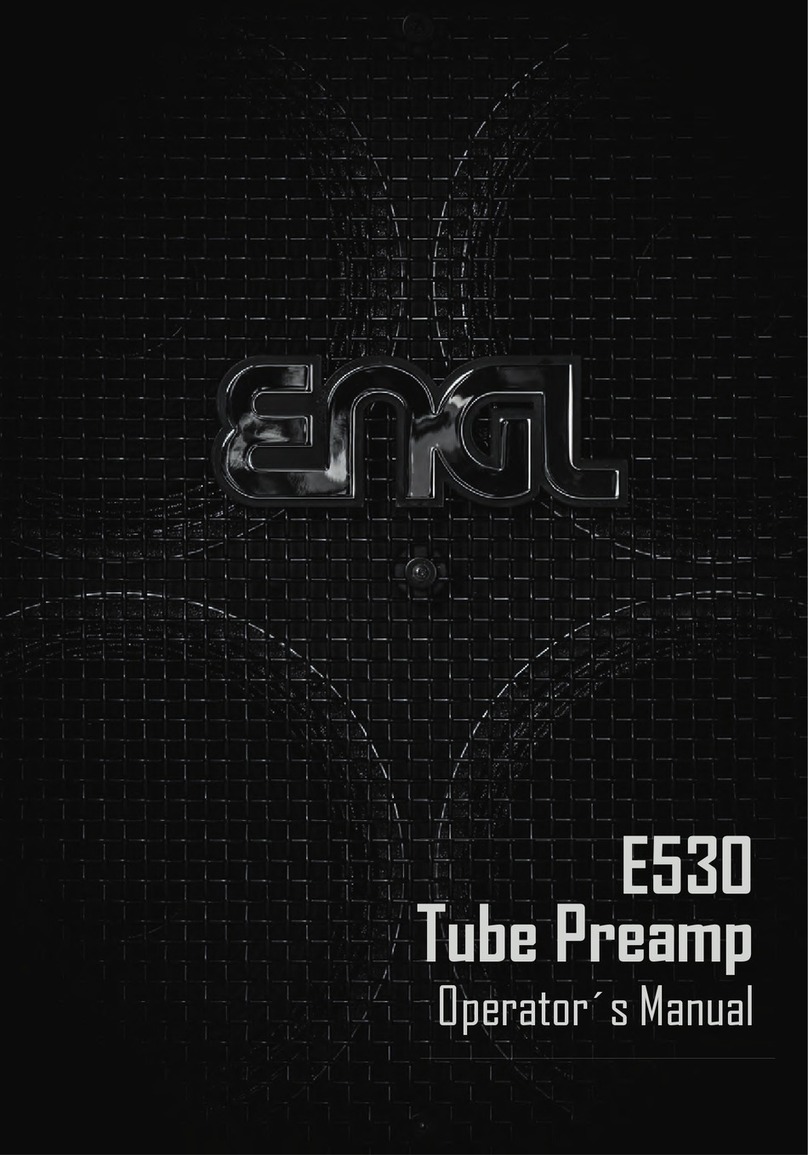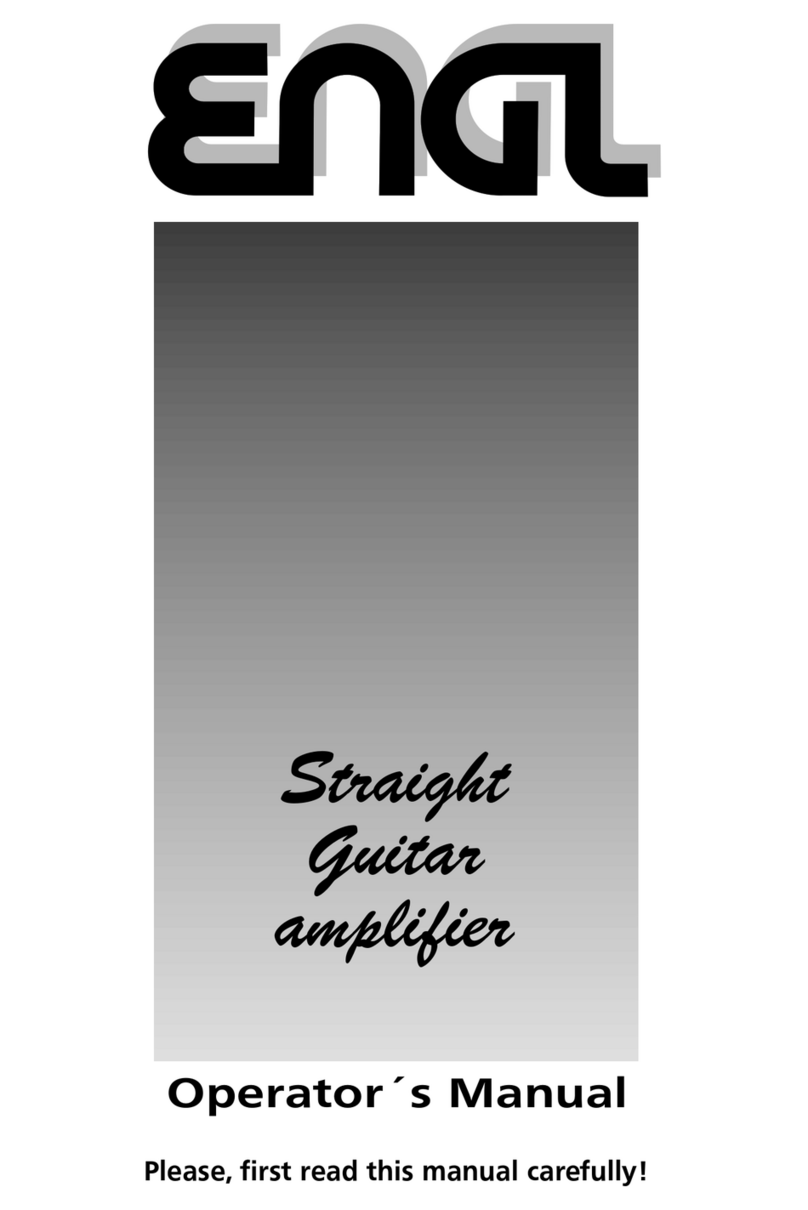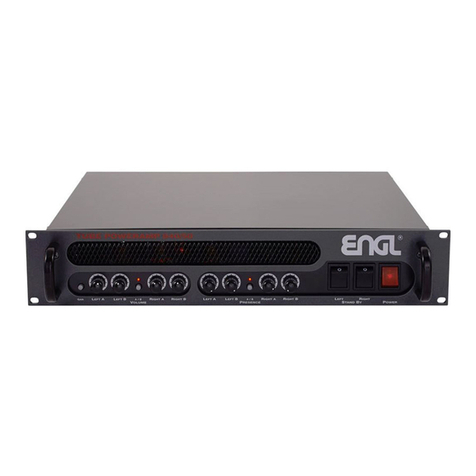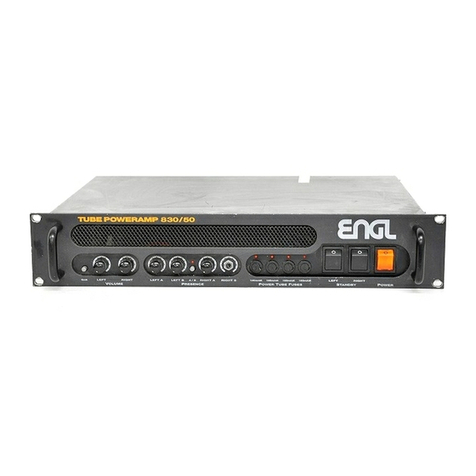Congratulationsonyourchoiceofamp,themightyENGLINVADERII tube-
powered head high-performance guitar amp
severalinnovativenewideas remarkablyefficientfeatures
top-notch guitar amp all-tube technology
vast range of great
fundamental tones
controlledremotelyviaMIDI
four independent channels deliver different
tonal spectrums
fast & heavy riffs punchy lead tone
assertive midrange kick
vintage clean classic grind creamy rock lead tone thick, lush tube
overdrive kind of aggressive hi-gain lead sound
contemporaryheavystyles
Sound button DIY tone-tuning tool vastly
extends unprecedented feature
fine-tune its voicing optional
SoundWizardmodule
A/B Master switching
INVADER II head two
switchableeffectloops programmableAmpMutefunction
MIDIfootcontroller
ENGLZ-4dualfootswitch
exterior's compelling visuals
excellent voicing options great flexibility
ENGL Sound Wizard module
clean crunch lead sounds excellent tube-driven quality
Two gain stages double instantly accessible
sounds
.Withthis
, you now own a that incorporates
and .
This marries the unrivalled tone of to the
awesome sound-shaping might of control features powered by modern microchip
circuitry. This elegant combination puts at your fingertips a
and a virtually inexhaustible reservoir of compelling variations, all
ofwhichmaybe .
TheINVADER IIamp offers -tweaked to
for various styles and playing techniques, for instance, Channel 4 for
and an power chords; Channel 3 for with an
. All four channels offer Low Gain / High Gain switching, as
well as dedicated Gain and Volume knobs and a 3-band EQ for each channel that give
you an even greater range of sound-sculpting options. The tonal palette ranges from
to , and from with
tothe it takesto cutthrough the din
of .
Then there's the nifty , a sort of that
the amp's application range. This lets you shape the
amp's fundamental sound as you see fit and using the
.
This amp boasts a lot more hip and practical features:
is a powerful option that has proven its merits in countless
ENGL amps (it has featured in E920 power amps since the late '80s and in the
legendary SAVAGE 120 head since '93!). Your also sports
anda .
Asanalternative tooperatingtheampremotelyviaa suchasthe
ENGL Z-15, you can also plug in an ENGL and manipulate
keyfunctionsdirectly.What'smore,theampcomeswithastereojackdesignedtotake
an oraswitchingsystemforselectingthefourchannels.
And the certainly match the interior's impressive
appointments. This amp's elegant and stylish look is sure to turn heads wherever you
play.
and the provided by so many sound
shaping and other special functions. You can also tweak the amp's fundamental
sound to taste using the , and your voicings can be
assigned to 128 MIDI presets.
3. fundamental , , and in :
in every channel the count of
. You can select channels and adjust Gain Low/High and the Sound
Z-9 Custom Foot Controller
1. a logical control feature array, utmost and
;
2.
ease of use remarkably intuitive
handling
This gives you:
4
